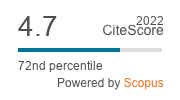Grain contamination by mycotoxins can cause significantly negative health and economic impact in areas where poor agricultural practices and food insecurity is prevalent. This study was conducted to investigate the current postharvest practices and aflatoxin contamination awareness level amongst maize producers in Jimma Zone, Ethiopia. Semi-structured questionnaires were used for quantitative and qualitative data collection from 90 randomly selected maize producers in two districts through a cross-sectional study design. The study revealed poor postharvest practices due to lack of proper infrastructure. Maize is harvested after maturation with the use of traditional sun drying. Plastic sheets are commonly used to protect harvested maize from rain during field drying. The majority of the respondents reported the use of traditional storage structures (81.1%) with great potential for possible mould proliferation and aflatoxin production. Maize producers of up to 62.2% were ignorant about aflatoxins and up to 26.7% reported the possible usage of aflatoxin contaminated maize in human food preparation and animal feed production. Up to 53.3% of the respondents were ignorant of aflatoxin risks in human health and stability during food processing hence the usage of mouldy maize for tella brewing. Further investigations on aflatoxin levels in maize-based food and beverages, and human exposure studies are needed. Moreover, there is a need to enhance the maize producers’ knowledge on good agricultural practices and mycotoxicosis through awareness programmes.
RESEARCH ARTICLE
Current postharvest practices and aflatoxin contamination awareness amongst maize producers in Jimma Zone, Southwest of Ethiopia
T.Y. Bereka Related information
1Department of Postharvest Management, Jimma University College of Agriculture and Veterinary Medicine, 307 Jimma, Ethiopia.
*Corresponding author: tizazuyigra@gmail.
, C.G. Kuyu Related information*Corresponding author: tizazuyigra@gmail.
1Department of Postharvest Management, Jimma University College of Agriculture and Veterinary Medicine, 307 Jimma, Ethiopia.
, K.D. Tolera Related information1Department of Postharvest Management, Jimma University College of Agriculture and Veterinary Medicine, 307 Jimma, Ethiopia.
, E.M. Addis Related information2Department of Agricultural Economics and Agribusiness Management, Jimma University College of Agriculture and Veterinary Medicine, 307 Jimma, Ethiopia.
World Mycotoxin Journal: 15
(1)- Pages: 35 - 43
Published Online: May 17, 2021
Abstract
Keywords: Zea mays, staple crop, mould, aflatoxin, tella
2023 Journal Impact Factor
2.0
source: Journal Impact Factor 2023™ from Clarivate™

Institutional Offers
For institutional orders, please contact [email protected].
Purchase Options
-
P. Battilani and M. Camardo Leggieri
-
F. Xu, R.C. Baker, T.B. Whitaker, H. Luo, Y. Zhao, A. Stevenson, C.J. Boesch and G. Zhang
-
A.O. Aasa, F.F. Fru, O.A. Adelusi, S.A. Oyeyinka and P.B. Njobeh
-
F. Wu
-
V. Ostry
-
V. Ostry
-
R. Bandyopadhyay, A. Ortega-Beltran, A. Akande, C. Mutegi, J. Atehnkeng, L. Kaptoge, A.L. Senghor, B.N. Adhikari and P.J. Cotty
-
A. Logrieco, A. Moretti and M. Solfrizzo
-
G. Schatzmayr and E. Streit
-
B. Grenier and I. Oswald



